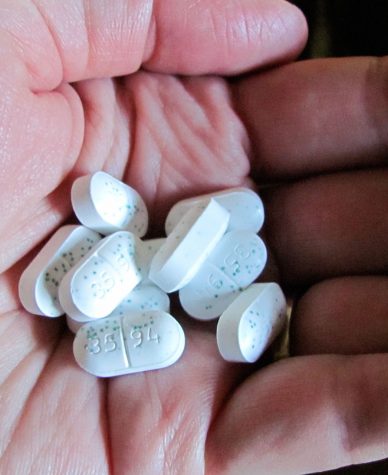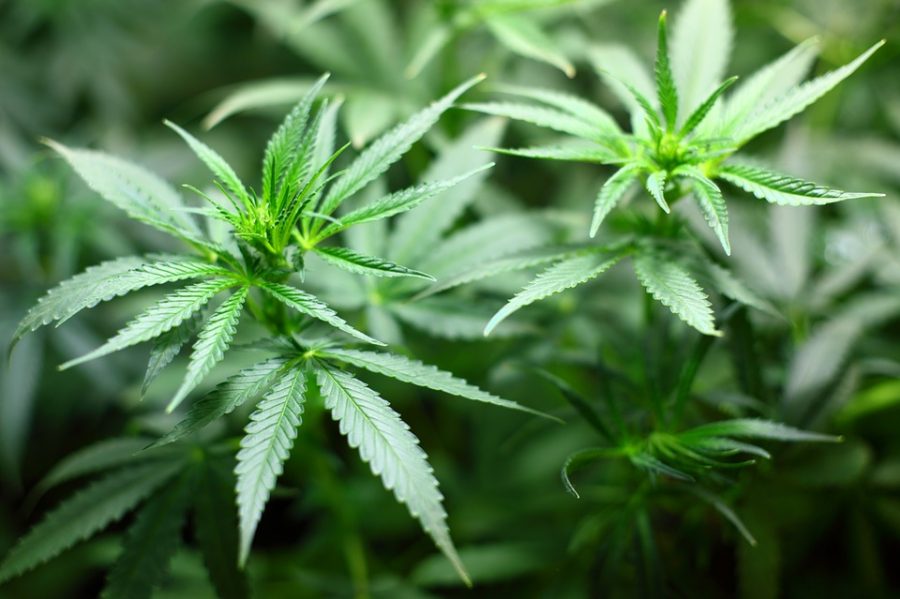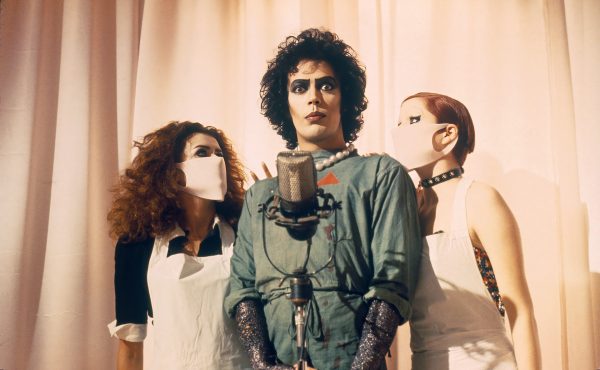Cannabis-Induced Illness Increases in Colorado
You’ve just had an awful morning of repeated and undignified puking. The only relief is offered in the comfort of long, soothing showers. Sitting on the shower floor as the hot water warms your back, you conjure up different deities in your head to pray to for sweet release. At this point you’re ready to offer your favorite pet or first-born child; anything to stop the shooting cramps and gastric distress you’ve been experiencing.

If you’re a cannabis enthusiast, taking a massive bong rip or a toke off a joint sounds like the most common sense thing to do right now. After all, medical marijuana is prescribed to help chemotherapy patients with their nausea symptoms. Currently Marinol and Cesamet are two FDA approved cannabis-related medications used to treat cancer patients.

Unfortunately, the cannabis cure could also be the cause; your herbal remedy may be nothing more than hair of the dog.
Cannabinoid Hyperemesis Syndrome, or CHS, is often mistaken for Cyclical Vomiting Syndrome because of their near identical symptoms and misery levels. CHS occurs after frequent, long term use of cannabis; roughly every day, multiple times a day, for years. According to a clinical study from the National Institutes of Health, the average span of cannabis use prior to the onset of CHS symptoms is about 16 years.
A Colorado peer reviewed study concluded that the cases of CHS have nearly doubled in-state since the liberalization of medical marijuana in 2009. Dr. Kennon Heard, one of the co-writers of the study, states that most emergency room doctors are familiar enough with CHS that they’re seeing it on a weekly basis.
For years CHS has been misdiagnosed; it’s only now becoming a known syndrome. Its symptoms were often attributed to other conditions, and the stigma of marijuana made patients reluctant to open up about it. Cannabis is also widely known, even by many who oppose it, as an effective anti-nausea treatment. In that, it seems contradictory that it would be the cause.

Being a relatively new condition, the reasons for CHS occurring is still speculative. Doctors and researchers theorize that it can be compared to other forms of chronic drug use; changes in the body’s nervous system is a response to years of chemical stimulation. The same is seen in people that have become addicted to opioids or alcohol.
Patients consistently report that long, hot showers temporarily alleviate the pain; the equivalent of using a hot water bottle. Another NIH study suggests it might have more to do with regulating the body’s autonomic nervous system. “It has been proposed that hot bathing may act by correcting the cannabis-induced disequilibrium of the thermoregulatory system of the hypothalamus.” One of the hypothalamus’ tasks includes coordinating body temperature, so perhaps a hot shower helps return the body to a proper homeostasis.

While CHS cases have increased throughout the state, it is still a relatively rare condition. It’s more concerning for patients that require cannabis-related medications for chronic conditions, but the studies show that it requires an inordinately large amount of the drug before symptoms set in.
For the few that truly suffer from the condition, the cure is to quit partaking in cannabis products. If you need cannabis for pain relief, it could be just a matter of how you’re consuming it. The majority of users experience CHS after smoking, so perhaps pain relief could come in the form of an edible as opposed to a joint.

If you’re suffering from CHS symptoms, try taking a break from marijuana and talk to your doctor.


Nico Danks is a second-year student at ACC and a transplant from the East Coast. Having lived in the Denver area for three years, she loves that Colorado provides ample resources of entertainment that can suit her ADHD lifestyle. Her...













Elizabeth • Feb 16, 2017 at 8:35 am
Here is yet another indication that this rush to #CHS diagnosis is causing damage to patients: http://www.cbc.ca/news/canada/nova-scotia/medical-marijuana-cannabis-health-canada-random-testing-1.3971601
It’s so easy to just blame weed, tell patient “just quit” and move on, rather than do the work and examine other potential indicators, such as pesticides and gastro diseases/disorders.
Elizabeth • Feb 16, 2017 at 8:02 am
Brad’s comment, “It’s pretty easy to spot from the time the person walks in the front doors, as it has a very distinct clinical impression.” is terrifying in the least and potential malpractice at the extreme. Automatically & immediately diagnosing patients with an extremely rare syndrome with a dearth of scientific evidence? Amazing.
We recently ran into this very problem in a Colorado Springs ER for my 27 yo son, who has suffered from debilitating Crohn’s Disease for nearly 12 years. The gastro doc on call refused to consider a Crohn’s flare despite a mass of evidence pointing to this. All he saw was the nausea and vomiting, and noting that my son smoked marijuana regularly, he made a snap judgement based on his very dangerous bias. Nothing we could say would sway him from his erroneous diagnosis. My son spent 5 days in the hospital, miserable, while the doctor refused to treat the Crohn’s as a flare and potential obstruction. (Which news flash, Brad, can also cause vomiting and nausea that doesn’t respond to traditional anti-emetics.)
What finally did lead to an abatement of his symptoms was a new loading dose of Humira, which he finally got after seeing his regular gastro doc after being released from the hospital. Something we begged the hospital doc to consider. Moreover, Feb. 14, my son had a colonoscopy to which he had an extremely painful and violently physical reaction because there indeed is a stricture/obstruction in his ileum due to the Crohn’s. (The doc had to have him sent to the ER via ambulance.) Now we are looking at surgery.
All of this done to a patient who already knows he has Crohn’s, but the doc still refused to treat for a known illness. I am truly horrified at what may be happening in ER rooms to young adults who may have serious gastro problems they aren’t yet aware of, but aren’t being diagnosed due to the instant leap to a CHS diagnosis. Once my son’s Crohn’s is manageable again and hopefully in remission, we will definitely be aggressively pursuing this potential medical nightmare.
Scott Bright • Feb 16, 2017 at 12:06 pm
That is incredibly disheartening to know what is going on with your son and to be denied by a doctor.
There is no excuse for that doctor’s behavior towards you and your family. The Pinnacle has seen your story and will be looking further into it.
Thank you for sharing.
Brad • Feb 8, 2017 at 7:25 pm
Thank you for your article as well. I hope lots of people find it helpful.
With work, school, and family tugging at me, i’m super pressed for time right now, not to mention i can primarily just share the information i gave initially. I would definitely consider contacting one of the local ERs and asking about interviewing them on this issue for their more expert opinions.
Here is a reference i found on the fly regarding the difficulty effectively treating the hyper-emesis. “Surprisingly, antiemetics such as metoclopramide, ondansetron, prochlorperazine, and promethazine failed to effectively relieve the symptoms of nausea and vomiting in patients with CHS.” – http://www.medscape.com/viewarticle/749937
Unfortunately i remember reading the “up to a year” reference in an article i came across a while back at work. If i come across it again, i’ll gladly share. The timelines of other articles seem scattered, but all seem to agree that cessation is the key and resuming cannabis use also re-initiates the CHS.
Nico Danks • Feb 9, 2017 at 4:28 pm
@Brad, Of course, HIPAA is totally a thing. Thanks again for the tips.
Brad • Feb 6, 2017 at 7:46 pm
I work in multiple Emergency Departments in the Denver Metro area and, at each one, we see this ALL the time. It’s pretty easy to spot from the time the person walks in the front doors, as it has a very distinct clinical impression.
One common component is denial. The literature i’ve read states that it may take a year or longer for the body to re-regulate so many times habitual week smokers will defend themselves, usually yelling, “BUT I STOPPED COMPLETELY FOR ___ DAYS/MONTHS AND I STILL GOT SICK LIKE THIS!” I haven’t run across anyone willing to believe this is the cause or that it may take a very extended time for their systems to recover.
It will be nice to pass on the hot shower idea! In my experience, NONE of the many anti-emetic (vomit stopping) medications we administer bring relief and the person usually ends up getting admitted for intractable vomiting and pain management. Hopefully all those marijuana tax dollars are helping to cover these costs!
Nico Danks • Feb 7, 2017 at 5:42 pm
@Brad, Thank you very much for your input, Brad. I would love to hear more about your experiences with CHS in a clinical setting. I was previously unaware that it would take so long for the body to re-regulate, and that anti-emetics would not bring relief. Feel free to message me at [email protected].
Bo Daniels • Feb 5, 2017 at 6:19 pm
This illness doesn’t exist. These people just need a sweater or drank too much booze.
You should be ashamed of yourselves for spreading lies and fake news!
Scott Bright • Feb 6, 2017 at 1:44 pm
Would you be so kind as to point out how you know this illness if non-existent?
This article cites a minimum of three separate, peer-reviewed scientific studies about this illness, which I am assuming you did not take the time to read.
I would definitely love to read any evidence you have supporting your claim that this illness doesn’t exist.
As to your claim about people simply needing a sweater or drinking too much booze, do you really think that chronic, heavy intake of any substance won’t have some sort of consequence, particularly marijuana?
And we assure you Bo, we do not spread lies or “fake news” but we do research our claims before we make them, which might be beneficial for you to do in the future as well 😉
Just because you disagree with something does not make it fake news. What makes something fake news are baseless, reactionary, sensationalist claims about things not very well understood by the one making the claim.